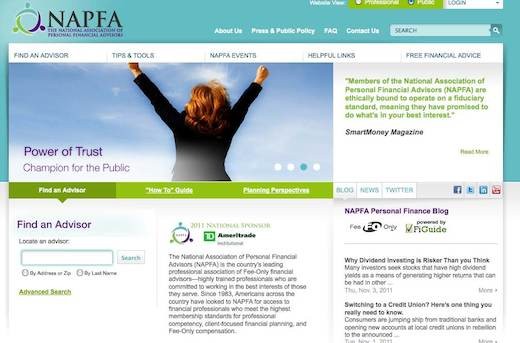Six Ways Financial Advisors Charge Fees
Post on: 19 Май, 2015 No Comment

Financial Advisor Fees Vary From Advisor To Advisor
Financial advisors charge in different ways. It can be difficult to make an apples to apples comparison. Chris Stein/Digital Vision/Getty Images
Financial advisor fees vary. Some advisors charge fees in the form of commissions; others in the form of an hourly rate, or percentage of your account value.
Below are the six ways financial advisors may charge fees.
1. A Percent Of Your Account Value
This is one of the most common ways that a financial advisor, or investment advisor, will charge.
When you hire an advisor who is compensated in this way, it is important to understand if they are providing investment management and financial planning. or just investment management. Expect to pay a slightly higher fee if they are providing full service financial planning along with investment management.
You will also want to ask an advisor who charges in this way if they are fee-only or fee-based. Fee-only advisors are more likely to use low cost funds in your account, minimizing the overall expenses you will pay.
How Does The Fee Work?
The advisor charges a fee based on a percentage of your account value. As your account value grows, they will make more money. If your account value goes down, they will make less money. In this way, they have an incentive to grow your account and to minimize losses.
A typical asset management fee can range from 2.0% per year on the high side to .50% per year on the low side. Typically the more assets you have, the lower the fee.
Learn more:
2. Commissions
This is one of the most common ways that a financial salesperson charges. Some of these people are good financial advisors; some are just good salespeople. Their advice can be influenced by the way they are compensated.
How Does The Fee Work?
Commissions can take the form of a front end sales load charged on a mutual fund. a surrender charge charged on an annuity, or commissions may be paid directly to the advisor from the investment company, as in the case of a non-publicly traded REIT.
Ask for a clear explanation of how your advisor is paid, and exactly how much they will receive if you buy the investments or insurance products they recommend.
Learn more:
3. A Combination Of Fees and Commissions
Many advisors today can collect fees and commissions. They often use the term fee-based. It is important to understand the difference between a fee-only advisor, and a fee-based advisor.
Learn More:
4. An Hourly Rate For Financial Advice
This can be a great way to pay for financial advice if you are willing to implement the advice on your own. For example, you may pay a financial advisor an hourly rate to tell you how to allocate the investments in your 401k plan. Then you would be responsible for actually making the changes they suggested.
How Does The Fee Work?
Since an hourly rate is not tied to the value of investments, or generated by the purchase of any specific investment, you can feel confident you will receive objective advice.
Just like attorneys, or accountants, hourly rates will vary widely from planner to planner. Expect to pay a higher hourly rate for experienced advisors, or advisors who have an area of specialty. Lower rates will be charged by less experienced advisors.
Learn more:
- To find an advisor that charges an hourly rate visit 5 Search Engines to Use to Find a Financial Advisor and scroll down to item number 4 to find a link to the Garrett Planning Network.

5. A Flat Fee To Complete A Specific Project
When you need a project completed, such as an initial retirement plan, it may make sense to pay a flat fee to have someone crunch the numbers, and help you understand all the moving parts that go into creating an accurate retirement plan projection.
How Does The Fee Work?
Since a flat fee is not tied to the value of investments, or generated by the purchase of any specific investment, you can feel confident you will receive objective advice.
The fee should be quoted upfront, along with a clear description of what will be provided for that fee. Ask if follow up meetings or questions are included.
6. A Quarterly Or Annual Retainer Fee to Provide Ongoing Financial Advice
If you have a more complex situation, such as ongoing stock options to be exercised, a small business, rental properties. or a need for regular income from your investments, then you may benefit from paying for ongoing advice.
How Does The Fee Work?
Since a retainer fee is not tied to the value of investments, or generated by the purchase of any specific investment, you can feel confident you will receive objective advice.
After learning about the complexity of your situation, an advisor can tell you what your quarterly or annual retainer fee would be, and what services are included in that fee. A written contract detailing the fee and services is usually provided.
Learn more:
How Can I Know How My Investment Advisor Will Be Paid?
Always ask a financial advisor for a clear explanation of how they will be compensated if you hire them, or if you purchase any of the investment or insurance products they recommend. This is one of the five questions you would want to ask any potential financial advisor .
Dana Anspach, CFP , is one of only a handful of people to hold the Retirement Management Analyst designation. She has been About.com’s MoneyOver55 Expert since 2008 and is the founder of Sensible Money, LLC. You can learn more about Dana’s work in her bio .














